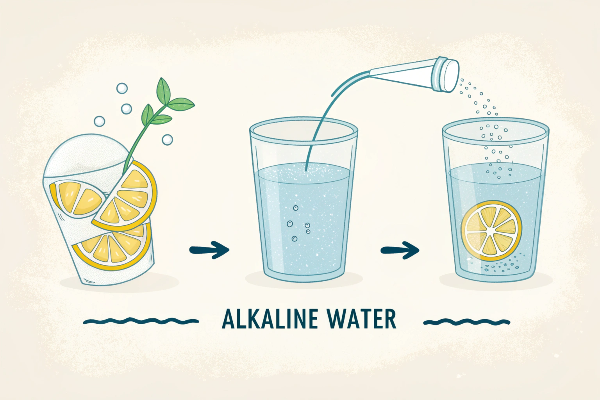Struggling to understand complex metallurgical processes? Feeling overwhelmed by the jargon? You’re not alone. Many find this field challenging.
Electrometallurgy is a branch of metallurgy that uses electrical energy to produce or refine metals. It encompasses processes like electrowinning, electrorefining, and electroplating.

But that’s just the tip of the iceberg. Let’s break down the core concepts and explore the fascinating world of electrometallurgy, step by step.
What is an Example of Electrowinning?
Feeling lost in the details of metal extraction? Confused by all the different methods? Many people are initially.
A common example of electrowinning is the production of copper from copper sulfate solutions1. This process involves passing an electric current through the solution, causing copper ions to deposit onto a cathode.

Dive Deeper into Electrowinning
Electrowinning, also known as electroextraction, is a powerful technique, but it’s crucial to understand its nuances. Let’s break it down:
-
The Basics: Electrowinning is an electrolysis process2. It uses an inert anode and a cathode (which can be a starter sheet or a permanent cathode). A current is passed through an electrolyte containing the dissolved metal ions3.
-
The Chemistry: The positively charged metal ions (cations) migrate towards the cathode, where they gain electrons and are deposited as solid metal.
-
Applications Beyond Copper:
| Metal | Typical Electrolyte | Common Uses |
|---|---|---|
| Copper | Copper sulfate solution | Electrical wiring, plumbing |
| Zinc | Zinc sulfate solution | Galvanizing, die-casting |
| Nickel | Nickel sulfate/chloride solution | Batteries, stainless steel |
| Gold | Cyanide solution | Electronics, jewelry |
| Silver | Cyanide or nitrate solution | Electronics, jewelry, photography |
| Cobalt | Cobalt sulfate solutions | Batteries, Superalloys, Pigments |
I once saw a demonstration of copper electrowinning at university laboratory. It was amazing to see pure copper forming on the cathode right before my eyes! It really helped solidify my understanding of the process.
What is Meant by Electrorefining?
Are you trying to understand how to get the purest metals possible? Puzzled by the difference between extraction and refining? You’re not the only one.
Electrorefining4 is a process used to purify metals. An impure metal anode is dissolved, and pure metal is deposited on the cathode, leaving impurities behind.

Dive Deeper into Electrorefining
Electrorefining is all about achieving ultra-high purity5. Let’s examine how it works:
-
The Setup: Similar to electrowinning, electrorefining uses an electrolytic cell. However, the anode is made of the impure metal to be refined.
-
Selective Dissolution and Deposition: The electric current is carefully controlled so that only the desired metal dissolves from the anode and deposits on the cathode. Impurities either remain undissolved or dissolve but do not plate onto the cathode.
-
Impurity Management:
- Anode Sludge: Some impurities, often precious metals like gold and silver, don’t dissolve and form a valuable byproduct called "anode sludge6."
- Electrolyte Purification: Other impurities that dissolve into the electrolyte need to be continuously removed to prevent contamination of the refined metal.
-
Real-world Impact
- Electrorefining is critical in producing the ultra-pure copper needed for high-conductivity electrical applications.
I have read many articles regarding that, for some applications, even 99.9% pure copper isn’t good enough! Electrorefining pushes the purity to levels like 99.99% or even higher.
What Kind of Metals are Extracted by Electrometallurgy?
Wondering which metals can be produced using electricity? Feeling limited by traditional smelting methods? It’s a common concern.
Electrometallurgy is primarily used for extracting reactive metals that are difficult to reduce using traditional chemical methods. This includes metals like aluminum, magnesium, sodium, and others.
Dive Deeper into Electrometallurgical Extraction
Let’s explore why certain metals are best suited for electrometallurgical extraction:
-
Reactivity: Metals high on the electrochemical series (very reactive) are difficult to extract using carbon reduction (smelting) because they form strong bonds with oxygen.
-
The Hall-Héroult Process: The classic example is aluminum extraction. Alumina (Al2O3) is dissolved in molten cryolite (Na3AlF6), and an electric current is passed through the mixture. Molten aluminum is deposited at the cathode.
-
Molten Salt Electrolysis: Many electrometallurgical extraction processes, like the Hall-Héroult process, use molten salts as the electrolyte rather than aqueous solutions. This is because water would react before the desired metal ions.
-
The Metals Involved:
- Aluminum
- Magnesium
- Sodium
- Calcium
- Lithium
- Rare Earth Metals
I remember reading about the massive amounts of electricity used in aluminum smelters. It’s a testament to the energy-intensive nature of extracting these highly reactive metals.
What are the Advantages of Electrometallurgy?
Trying to decide if electrometallurgy is the right approach? Unsure about its benefits compared to other methods? Many face the same dilemma.
The advantages of electrometallurgy include the ability to extract highly reactive metals, produce high-purity metals, and recover metals from dilute solutions.
Dive Deeper into the Advantages
Electrometallurgy offers some unique capabilities. Let’s break down the key benefits:
-
High Purity7: As discussed with electrorefining, electrometallurgy can achieve exceptional purity levels, crucial for many modern applications.
-
Extraction of Reactive Metals8 It’s the only commercially viable method for producing certain metals like aluminum and magnesium.
-
Lower Temperature Processes: Compared to smelting, some electrometallurgical processes can operate at lower temperatures, potentially saving energy and reducing emissions (although this depends on the specific process and the source of electricity).
-
Recovery from Dilute Solutions9 Electrowinning can effectively extract metals even from very dilute solutions, making it useful for processing low-grade ores or recycling waste streams.
-
Precise Control: The use of electricity allows for very precise control over the process, leading to better product quality and consistency.
-
Disadvantage:
- High energy costs, especially if electricity is generated from fossil fuels.
It’s fascinating to think about how electrometallurgy is enabling the recycling of metals from electronic waste, contributing to a more circular economy.
What is an Example of Electrometallurgy?
Are you confused by the broad term and want some clear-cut cases? Do you have a hard time visualize what’s going on? It’s completely normal.
A common example of electrometallurgy is the Hall-Héroult process1 for aluminum production. This process uses electrolysis to extract aluminum from alumina dissolved in molten cryolite.

Dive Deeper into a Specific Examples
Let’s put all the pieces together with another example, besides Hall-Héroult process:
-
- The Process: Impure copper anodes (from smelting) are dissolved in a copper sulfate solution. Pure copper is deposited on the cathode, leaving impurities behind.
- The Application: Producing high-purity copper for electrical wiring.
-
- The Process: Zinc ions in a zinc sulfate solution are reduced and deposited onto a cathode.
- The Application: Used in galvanizing steel to prevent corrosion.
-
Metal recycling:
- Electrometallurgy is also gaining traction in the recycling of metals, particularly from electronic waste and spent batteries.
I am still looking for more and more example in my daily life.
Conclusion
Electrometallurgy offers a powerful and versatile set of techniques for producing and refining metals, playing a crucial role in modern industry and sustainable resource management. It’s essential for producing many materials we rely on every day.
-
Explore the role of copper sulfate solutions in electrowinning to understand their significance in metal extraction processes. ↩ ↩
-
Learn about the electrolysis process in electrowinning to grasp how metals are extracted efficiently and effectively. ↩ ↩
-
Discover the behavior of metal ions during electrowinning to enhance your understanding of this critical extraction technique. ↩ ↩
-
Explore this link to gain a comprehensive understanding of electrorefining, its processes, and its significance in metal purification. ↩
-
Discover why achieving ultra-high purity is crucial in various industries, especially in electronics and electrical applications. ↩
-
Learn about anode sludge, its formation, and its value in the refining process, which can include precious metals. ↩
-
Understanding the significance of high purity metals can enhance your knowledge of electrometallurgy’s advantages. ↩
-
Exploring this topic reveals the unique capabilities of electrometallurgy in metal extraction. ↩
-
resource will provide insights into the efficiency of electrometallurgy in processing low-grade ores. ↩





